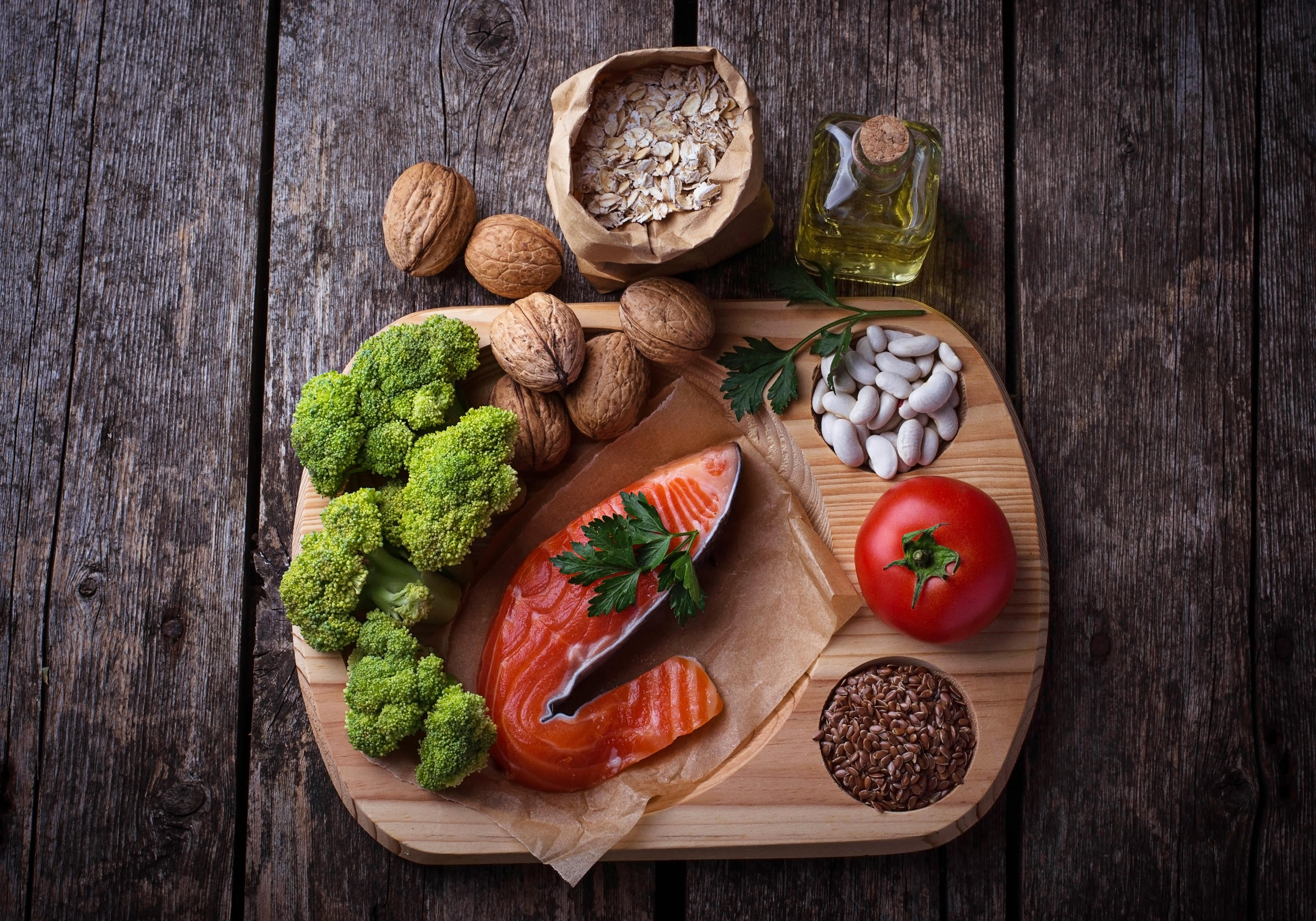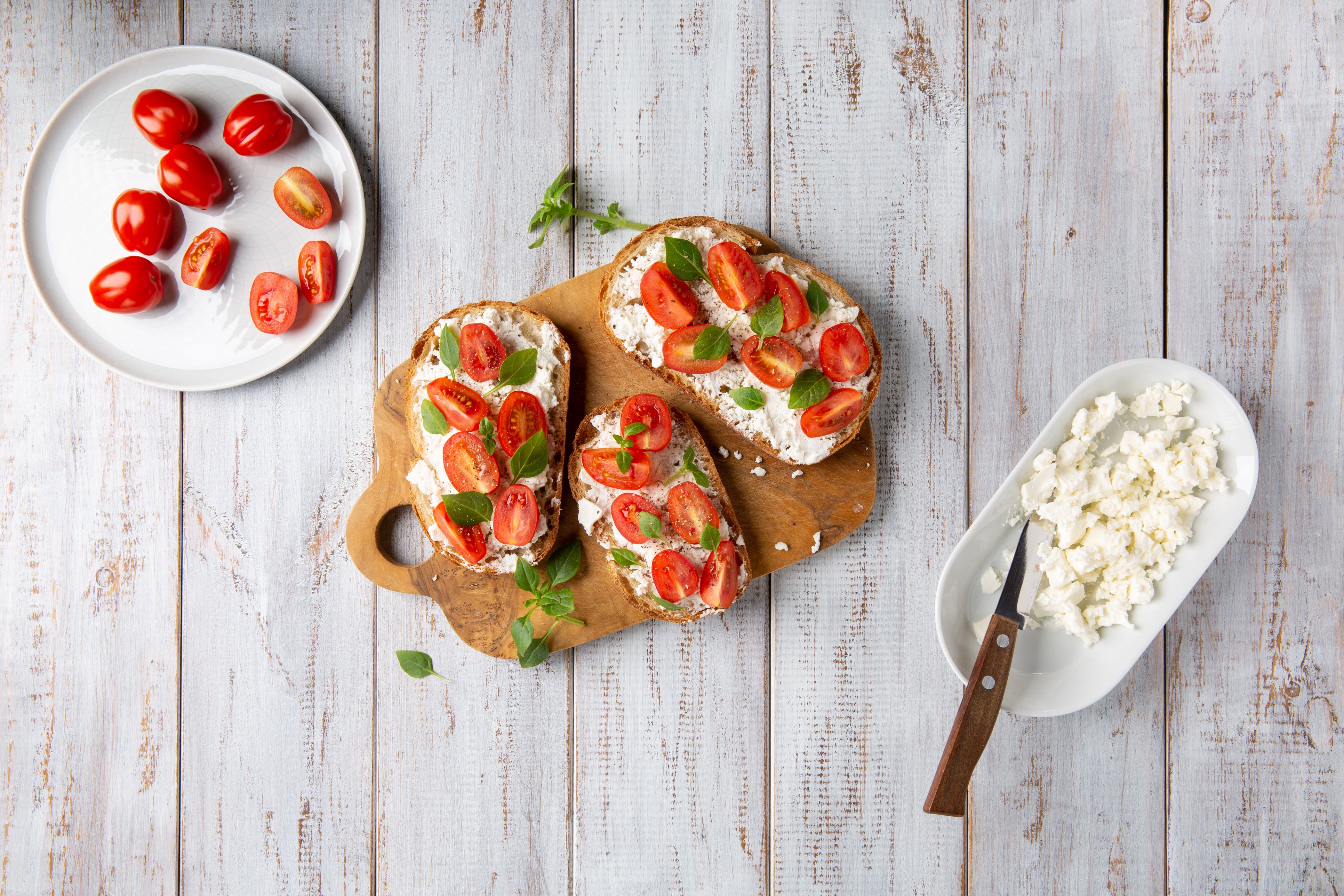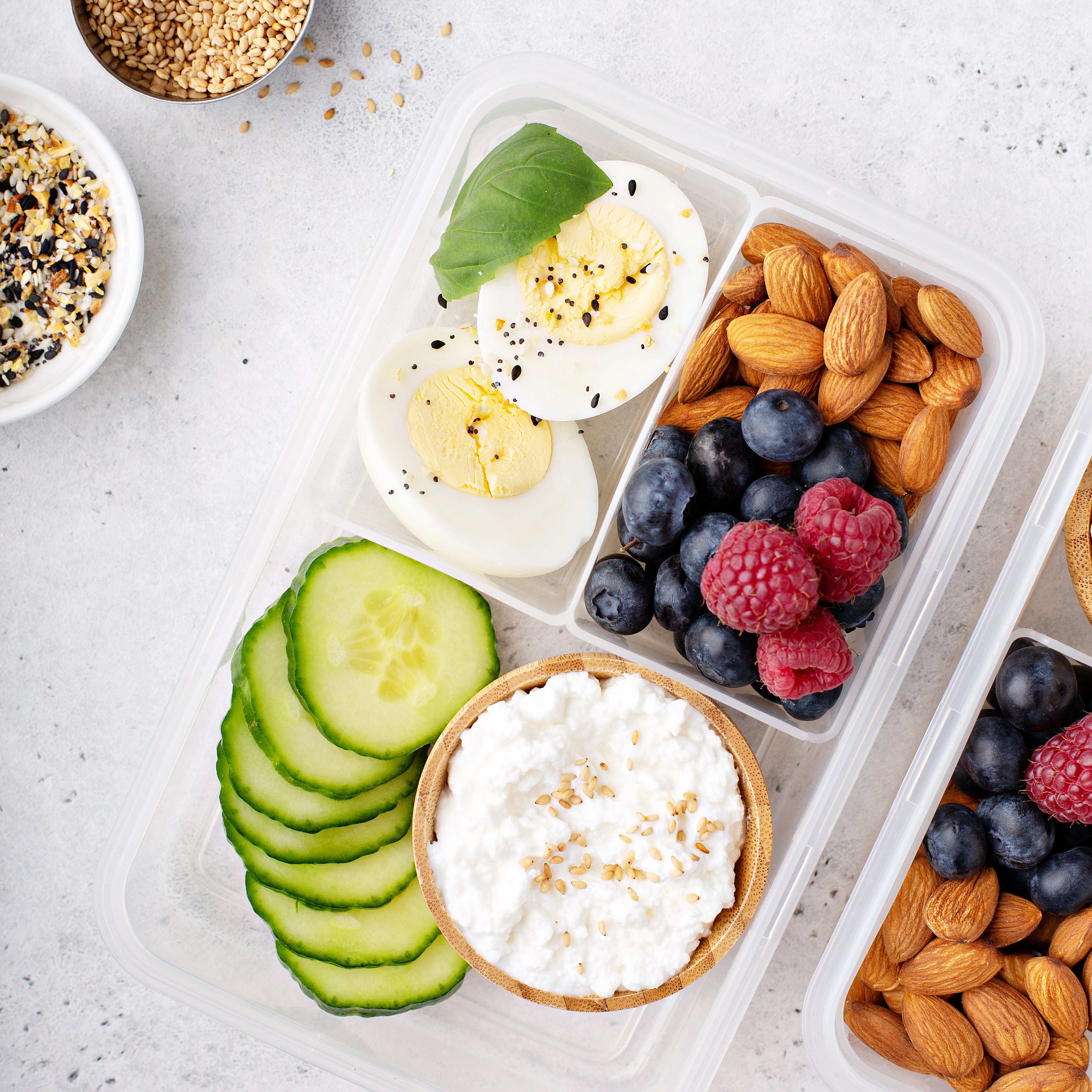Snacking bad for your health? Not according to the nutritionists who swear by the little-and-often diet
While fasting is in fashion and grazing gets a bad rap, Hannah Twiggs speaks to a nutritionist who looks back to how our ancestors ate and argues why eating snack size amounts of food up to seven times a day can help with better portion control, more stable energy levels and improved muscle health in older adults


The routine of having breakfast, lunch and dinner has been the widely accepted way to eat since the industrial revolution, when set meal times were introduced to fit around the factory working day.
However, a new study has shown that Brits are increasingly shifting away from the traditional three meals a day, with nearly half (48 per cent) saying they now eat smaller portions at least seven times a day, and 89 per cent feeling more satisfied and energised as a result. And some nutritionists are now suggesting that eating smaller meals more frequently might actually be better for our health.
The idea of eating little and often aligns more closely with how our hunter-gatherer ancestors likely ate. Instead of large, structured meals, early humans probably grazed throughout the day, eating whatever food they could find, whenever it was available. This intermittent eating helped keep their energy levels steady throughout the day, much like the benefits nutritionists now attribute to the little-and-often diet.
In fact, several cultures around the world still maintain eating habits that resemble this approach. In countries like Spain and Italy, people often eat multiple smaller meals or snacks – like tapas or antipasti – throughout the day. These mini-meals are often balanced and nutrient-rich, providing a steady supply of energy without the large spikes and crashes that can accompany bigger, more calorie-dense meals.
Could this ancient eating pattern be the key to more stable energy, improved concentration and better overall health?
Special benefits for older adults
As we age, our nutritional needs change, and the little-and-often diet can be particularly beneficial for older adults. One reason is that appetite tends to decrease with age, and consuming smaller frequent meals can make it easier to meet nutritional needs without overwhelming the digestive system.
Older adults often need more protein to maintain muscle mass and strength, as muscle loss, known as sarcopenia, becomes more common with age. By spreading protein intake across several meals throughout the day, older people can improve muscle protein synthesis. Foods like yoghurt, cheese, eggs and lean meats can be part of these mini-meals to ensure older adults get enough protein to support muscle health and prevent frailty.
Additionally, frequent balanced meals can help older adults maintain stable blood sugar levels, reducing the risk of energy dips, mood swings and even the onset of type 2 diabetes. This eating pattern also helps with digestion, which can become slower with age, making smaller meals easier to process.
Steady bloody sugar, steady energy
One of the main benefits of a little-and-often diet is the impact it has on stabilising blood sugar levels. When you eat smaller, more frequent meals, your body receives a consistent supply of energy throughout the day. Nutritionist Juliette Kellow says: “Eating little and often can help keep our blood sugar levels steadier so we have more energy, are better able to concentrate and are less likely to feel tired, irritable or hangry.”
Research backs this up: a study published in the British Journal of Nutrition found that eating smaller, more frequent meals improves satiety and helps regulate appetite, reducing the likelihood of overeating. It also helps prevent the energy dips that often follow large meals, leading to improved focus and productivity throughout the day.
By keeping your blood sugar levels stable, you may find that you have more sustained energy, sharper concentration and even a better mood overall.
A little-and-often diet isn’t one-size-fits-all. Athletes, for instance, may need slightly larger portions or more protein-dense snacks to meet their energy needs for training and recovery. Similarly, those with medical conditions like hypoglycemia or diabetes might benefit greatly from this approach, as it helps stabilise blood sugar levels.
Better portion control and less overeating
With three large meals, it’s easy to overeat, particularly when hunger peaks between meals. Eating smaller portions more frequently can help curb overeating by keeping hunger in check. It also encourages mindful eating, allowing you to be more aware of how full you are throughout the day.
Mindful eating means paying attention to your food and recognising when you’re full. A study from the University of Bristol found that adults who played a computer game while eating lunch felt less full after eating and consumed twice as many biscuits 30 minutes later compared to those who gave their lunch their full attention. By eating more mindfully, you’re less likely to overeat or reach for unhealthy snacks later on.
A balanced approach to nutrition
One of the best aspects of a little-and-often diet is that it can be packed with a variety of nutrient-dense foods. Kellow says it’s important to plan these smaller meals to ensure they’re balanced. Instead of grabbing unhealthy snacks, you can opt for nutritious mini-meals that provide essential proteins, healthy fats, vitamins and minerals.

“Great choices include wholegrain toast, pitta or crackers with light cheese spread and tomato, salads topped with salmon, prawns, eggs, beans or chicken, vegetable omelettes, a bowl of fruit with plain yoghurt and nuts, or a jacket potato filled with tuna and sweetcorn,” she says.
Protein, for example, is crucial for muscle maintenance. Good options include eggs, beans, chicken or dairy, which are packed with nutrients and keep you feeling full longer. Likewise, fruits and vegetables are essential as they provide fibre and vital nutrients to support your overall health. In fact, a study from Imperial College London found that eating up to 10 portions of fruits and vegetables a day can offer even more health benefits than the commonly recommended five servings.
Heart-healthy and weight-friendly choices
Frequent consumption of sugary snacks or processed foods can contribute to weight gain and increase the risk of heart disease. But by choosing low-sugar options, such as whole grains, vegetables, nuts and lean proteins, you can satisfy your hunger without compromising your health.
For example, snacks like wholegrain toast with unsweetened peanut butter or hummus with vegetable sticks are great choices for keeping you full without overloading on calories. Dairy products like low-fat cheese spreads and yoghurt offer calcium for strong bones, and their versatility makes them a perfect fit for mini meals or snacks on the go.
Practical tips for meal prep
Meal prep is essential when adopting a little-and-often diet as it’s easy to consume more calories than intended if your mini meals aren’t well planned. A food diary or app can help you keep track of what and when you’re eating. Set aside time each week to prepare several mini meals in advance. Recipes like vegetable stir-fries, wholegrain salads or protein-packed soups can be made in bulk, then divided into smaller portions for easy meals throughout the week. Keep pre-cut veggies, boiled eggs and portioned nuts on hand for quick, nutritious snacks.

Additionally, using containers or portioned snack bags helps with portion control and makes it easier to grab a healthy option on the go. With a little planning, this eating style becomes much more manageable.
A day in the life of a little-and-often diet
Here’s what a typical day on a little-and-often diet might look like:
Meal 1: scrambled eggs with spinach and tomatoes on wholemeal toast
Meal 2: chopped apple and banana with plain yoghurt
Meal 3: Tuna and bean salad
Meal 4: Wholemeal pitta with light cheese spread and sliced peppers
Meal 5: Chicken and vegetable stir fry with brown rice
Meal 6: Handful of almonds and blueberries
This type of meal plan ensures you’re receiving steady nutrition throughout the day without overloading your digestive system with large meals. It keeps your energy levels stable, and you’re more likely to avoid unhealthy cravings.
Snacking recipes
Creamy turkey and cheese roll-ups

Ingredients:
1 tortilla wrap
3 wedges of The Laughing Cow Light
Turkey slices
Handful of rocket/arugula
Cucumber slices
Salt
Method:
1. Spread a light, creamy layer of The Laughing Cow Light over the tortilla.
2. Top with fresh rocket.
3. Add a layer of sliced turkey and cucumber.
4. Roll up tightly and slice into pinwheels.
5. Serve as a delicious snack or appetiser.
Toast with cream cheese, grilled peach slices and honey

Ingredients:
Sourdough baguette
The Laughing Cow Light
Peach
Honey
Mint for garnish
Olive oil
Method:
1. Drizzle the bread slices with olive oil, then grill them.
2. Grill the peach slices.
3. Spread a generous layer of The Laughing Cow Light on the toast.
4. Top with grilled peach slices and drizzle with honey. Garnish with mint. Enjoy!
Stuffed mushrooms with cream cheese, spinach and parmesan

Ingredients:
450g chestnut mushrooms
10 wedges of The Laughing Cow Light
40g spinach
2 garlic cloves
Grated parmesan
1 tsp salt
½ tsp black pepper
Method:
1. Preheat the oven to 200C (400F).
2. Remove stems from the mushrooms and chop them into small cubes.
3. Mix The Laughing Cow Light with spinach, minced garlic, grated Parmesan, chopped mushroom stems, salt, and pepper.
4. Stuff the mushroom caps with the cheese and spinach filling.
5. Bake for 20-25 minutes until the mushrooms are tender. Enjoy!
Study conducted and recipes provided from The Laughing Cow






Join our commenting forum
Join thought-provoking conversations, follow other Independent readers and see their replies
Comments